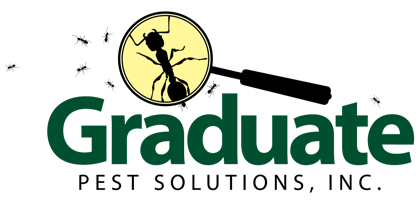Got Bed Bugs…YIKES! If you’ve checked the list of signs of a bed bug infestation and have gone through the process of trying to eliminate them yourself, it’s likely time to call in a professional. Bringing in a pest professional can be an intimidating process. From scouring reviews and seeking a quote‑or multiple—you’ll have little time to consider what actually needs to take place. We know because we do bed bug treatments. We may be a little biased but we want to provide this list so you can make an informed decision, regardless of who you choose.
Getting a Quote
Typically, asking for a quote is daunting. A lot of businesses won’t even provide pricing without an inspection. There are lots of things to consider including; type of treatment, level of infestation, level of clutter, and more. HomeAdvisor estimates “homeowners spend an average of $1,000 to $2,500 to exterminate bed bugs. The level of infestation, the size of the space, and the type of treatment will affect your price. You could pay as little as $300 for a small problem and as much as $5,000 to clear a large house.”
This should give you an idea of how wildly different quotes can be, but you may still need to have a professional come to your home to give you an accurate estimate. A technician will look for tiny bloodstains on your bedsheets, pillowcases, sofa or recliner, dark or rusty spots of bed bug excrement on sheets and mattresses, clothing, and walls. You may have eggshells or shed skins of bed bugs in areas where bed bugs hide. A more obvious sign is an offensive, musty odor in heavily affected areas.
What Bed Bug Treatment Looks Like
Different professionals use different methods, but here are some things you can expect a pro to use:
- Heat treatment: One common treatment for bed bugs is what is known as a “hot box.” An infested home is sealed and heated to an excessive temperature that exceeds what a bed bug can survive.
- Mattress encasements: A pest professional may recommend encasement covers for your mattress and box spring. The mattress is first given a thorough treatment and then totally encased in a bedbug-proof cover. The goal is to seal the bed bugs inside with the treatment. This is typically used with lite to moderately infested mattresses. Heavily infested mattresses and box springs may need to be treated and disposed of.
- Crack and crevice injection/spot treatment: Traditional liquid sprays may be deployed in difficult-to-reach areas. This is especially effective between floorboards, baseboards, moldings, and bed frames.
- Pesticide dust: This form of a product is good for wall void treatments and electrical outlets
Aftercare
It’s important to take the best steps to prevent a resurgence of bed bugs after you’ve spent serious time and money removing them. We’ve compiled a list of bed bug preventions tips, so you don’t have to go through this again:
- When traveling, thoroughly inspect your clothing bags before bringing them into the house. This can be anything from luggage to your children’s school bags or laptop attaché’.
- When traveling, first place your bags in the bathroom since bed bugs are rarely found here unless the room is heavily infested. Then, take the time to check the mattress for signs of a bed bug infestation.
- Consider vacuuming your suitcases, including the outer seams, before storing them away.
- Inspect and wash all the clothes you were wearing if you suspect you’ve come in contact with anyone who has bed bugs.
- DON’T be afraid to talk to friends and family that you visit or who visit you. These bugs are hitchhikers and don’t require filth or uncleanliness to survive. They only need a warm-blooded person or pet sleeping nearby.
Don’t let them bite. Call us at 413-566-8222 or contact us with any questions or if you are experiencing a pest problem. We have the knowledge and the services to correct your infestation. Ask Graduate about our preventative annual plans to keep your home pest-free year-round!
YOU MAY ALSO LIKE
These related articles

